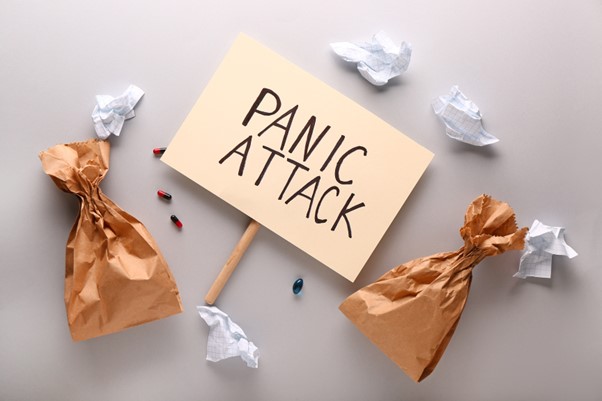Panic Attacks: Facts Versus Myths

Panic attacks are intense episodes of fear and anxiety that can be both physically and emotionally overwhelming. These attacks are often surrounded by misconceptions that can exacerbate stigma and hinder proper understanding and treatment. Let’s debunk some common myths and present the facts about panic attacks.
Myth 1: Panic Attacks and Anxiety Are the Same Thing
Fact: While panic attacks are a symptom of anxiety disorders, they are distinct episodes characterized by sudden and overwhelming fear, often without a clear trigger. Anxiety, on the other hand, is a more prolonged feeling of worry or unease that can be persistent and less intense [2].
Myth 2: Panic Attacks Cause Extreme Harm
Fact: Panic attacks, though frightening and physically intense, are not life-threatening. Symptoms like a racing heart, sweating, and shortness of breath are distressing but not harmful. It’s important to understand that these symptoms are the body’s natural response to perceived danger, and while they feel severe, they do not cause physical damage [1].
Myth 3: Only People with Panic Disorder Have Panic Attacks
Fact: Panic attacks can occur in individuals without panic disorder. Various factors, including stress, certain medications, or other mental health conditions like depression or PTSD, can trigger panic attacks. This means that even people who do not have a diagnosed panic disorder can experience panic attacks under certain circumstances [2].
Myth 4: Panic Attacks Make You Go Insane
Fact: Panic attacks do not cause insanity. They are a reaction to heightened anxiety and fear, not an indicator of losing touch with reality. People experiencing panic attacks remain fully aware of their surroundings and do not lose their grip on reality, although the intense fear can make it feel otherwise [4].
Myth 5: Panic Attacks Are a Sign of Weakness
Fact: Panic attacks are not a reflection of personal weakness or a lack of willpower. They are a medical condition that can affect anyone, regardless of their strength or resilience. The biological and psychological factors contributing to panic attacks are complex, and experiencing them is not a matter of personal failure [2].
Myth 6: Panic Attacks Can Always Be Avoided
Fact: While certain triggers can be managed or avoided, panic attacks can occur unexpectedly. They are often unpredictable, making it difficult to always avoid them. Effective management strategies include therapy, medication, and lifestyle changes that help reduce the frequency and intensity of attacks [4].
Myth 7: Panic Attacks Cause Fainting
Fact: Fainting during a panic attack is extremely rare. Although symptoms like dizziness and lightheadedness are common, they do not typically lead to fainting. Panic attacks are more likely to cause hyperventilation, which can make a person feel faint but usually does not result in actual fainting [1].
Myth 8: You Can Always Tell When a Panic Attack is Coming
Fact: Panic attacks can come on suddenly and without warning, making it difficult for individuals to predict when they will occur. While some people may experience certain triggers, others may have panic attacks out of the blue, making them hard to anticipate [1].
Myth 9: Panic Attacks Have No Effective Treatments
Fact: There are effective treatments for managing and reducing the frequency and severity of panic attacks. These include cognitive-behavioral therapy (CBT), medications such as selective serotonin reuptake inhibitors (SSRIs), and lifestyle changes like regular exercise, mindfulness, and stress management techniques. Seeking professional help can significantly improve the quality of life [4].
Myth 10: Children Do Not Experience Panic Attacks
Fact: Children and adolescents can experience panic attacks, though they may express their symptoms differently than adults. It is crucial for parents, teachers, and caregivers to recognize the signs and provide appropriate support and intervention to help young individuals manage their anxiety effectively [2].
Understanding the facts about panic attacks is crucial for breaking the stigma and ensuring that those affected receive appropriate support and treatment. Increasing awareness and education about the realities of panic attacks can help create a more compassionate and supportive environment for those who experience them.


🌐 Sources
- betterhealth.vic.gov.au – Panic attack
- healthline.com – Panic Attack vs. Anxiety Attack: What’s the Difference?
- mi-psych.com.au – Panic Attacks vs Panic Disorder – what is the Difference?
- nimh.nih.gov – Panic Disorder: When Fear Overwhelms
- my.clevelandclinic.org – Panic Attacks & Panic Disorder: Causes, Symptoms & Treatments
- healthline.com – Myth vs. Reality: What Does a Panic Attack Feel Like?






Responses